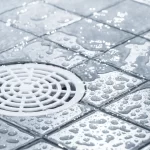Welcome back to our ongoing series on water conservation! Last week, we dived into the importance of efficient water usage and discussed some practical habits for reducing water consumption in our homes. Continuing with our exploration of the 3 ways to conserve water – reduce, repair, and retrofit – today’s post will focus on the latter two: repair and retrofit.
Tackling Repairs: Beyond the Basics
Last time, we emphasized the significance of repairing leaks and malfunctioning fixtures, noting how a single dripping faucet can waste up to a thousand liters of water annually. Let’s delve deeper into some less commonly addressed, yet equally crucial, repair strategies:
1. Detecting Hidden Leaks
Underground Leaks: Often overlooked, these can occur in underground pipes leading to your home. Signs include unexplained wet spots in your yard or an unusually high water bill.
Silent Toilet Leaks: Sometimes, toilet leaks can be silent and go unnoticed. A leaky toilet can waste approximately 200,000 liters of water a year. To check for a leak, you can put a couple of drops of food coloring into the tank. After a few minutes, if the water in the bowl is colored, there is a leak. Regularly inspecting the internal mechanisms of your toilet can prevent these stealthy water wasters.
2. Insulating Pipes
Prevent Bursting: Insulating your water pipes isn’t just about conserving heat; it also prevents pipes from bursting in cold weather, which can lead to significant water loss and property damage.
Retrofitting: Embracing Modern Conserving Water Technology
Retrofitting old fixtures with modern, water-efficient alternatives is a game-changer in conserving water. Let’s expand on some innovative retrofitting options:
1. Toilet Retrofitting
The toilet should be the first appliance to work on when conducting plumbing retrofits. The two choices you have with a toilet are either: a) adapt, or b) replace.
a) Toilet Adaptations: Adapting entails the replacement of certain components within the toilet tank to use lower volumes of water. Some devices can be installed into the tank of your toilet that can transform a wasteful old toilet into a more efficient fixture. These devices are categorized by their functions, which can be broken down into:
- Water retention;
- Water displacement; and
- Alternative flushing.
The most common retention device is a toilet dam. This device blocks off a section of water around the valve, conserving about 5 liters of water per flush cycle. Dams are very inexpensive and easy to install, costing under $15 and taking approximately 5 minutes to install properly.
An example of a water displacement device would be a displacement bag. This is a plastic bag filled with water. What this is essentially doing is occupying a certain volume of space, meaning that with every flush cycle, that amount of water is conserved. These are also inexpensive, and can even be fashioned from products lying around your home. A plastic bottle could be used if you wish.
b) Toilet Replacement: If your toilet is older than 20 years, it’s a good idea to completely replace it with one of the newer ultra-low-volume toilets. This can reduce your water consumption from about 20 liters per flush cycle to around 6 liters.
2. Smart Shower Heads
Flow Optimization: Newer water conserving shower head come with flow-optimizing technology, reducing water usage without sacrificing water pressure.
Timed Showers: Some even include timers or smart controls, helping you monitor and reduce your shower time.
3. Intelligent Lawn Sprinklers
Weather-Sensitive Systems: Modern sprinklers can adjust their watering schedule based on the weather, ensuring your lawn only gets water when it needs it.
Zoned Watering: These systems can also water different parts of your yard with varying intensity, avoiding over-watering areas that need less.
Sustainable Retrofits: A Step Forward in Water Conservation
While retrofitting individual fixtures is impactful, let’s explore broader, more sustainable retrofitting practices:
1. Rainwater Harvesting Systems
Collection and Reuse: Installing a system to collect and repurpose rainwater for non-potable uses (like watering plants or flushing toilets) significantly reduces reliance on treated water.
2. Greywater Systems
Reuse from Sinks and Showers: Greywater systems take wastewater from sinks and showers and repurpose it for toilet flushing or irrigation, offering a double win for water conservation.
That’s all for this week, but keep your eye on this blog, as we’ll be offering some more valuable information on water conservation and retrofits in the future! If you need any help with replacing your plumbing fixtures to save water, contact professional plumbers in Toronto.
Remember, every drop counts, and together we can make a substantial difference in conserving this precious resource. Stay tuned for more insights and tips on water conservation!






